Month: May 2017
Keep That Parmesan Rind!
One of Italy’s greatest contributions to food has got to be Parmesan. With its origins in the region of Emilia-Romagna, it is celebrated for its versatility. Ranging from being a garnish when grated over a casserole, or the masterpiece of a cheese board, it’s delicious salty notes can more than hold its own against robust blue cheeses or meats.
Far too often, a big part of the cheese ends up being unwanted and unloved trash. It doesn’t have to be that way though! The skin sometimes referred to as the rind of Parmesan has so much more to contribute to a lot of different dishes, if only you would give it a chance to display its fabulous qualities!
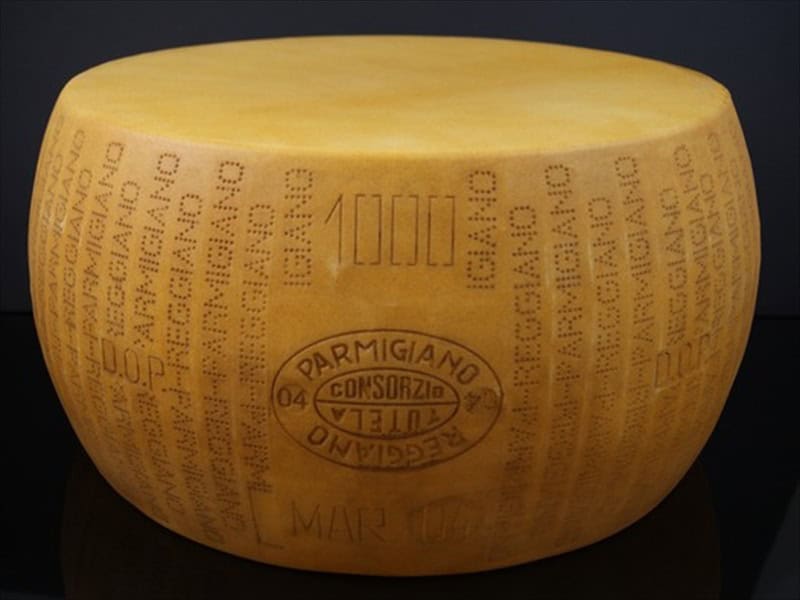
For example, when you’re braising a comforting dish. Along with whatever you add in terms of spices, herbs, and stock, the cooking liquor could definitely use some seasoning to lift the dish to a whole new level. Usually, you’d just reach for the salt and pepper, but it should be known that there is more than enough sodium residing within the skin of Parmesan. It offers a milky, subtle dose of sodium which cannot be achieved by just salt and pepper.
Unique Qualities
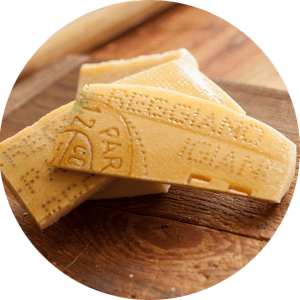
You may be wondering what to do with it, but it is fairly simple. All you have to do is put a piece into the liquid, allow it to soak and release its unique qualities. The heat will aid with soaking and absorb the delicious qualities, and when the braise is done turning into perfection in both texture and taste, you simply have to fish out what remains of the rind.
The same approach can be used when making other dishes, especially those you’re using the parmesan with. It simply acts as a delicious season, to give your dish that extra taste you’ve been searching for.
Not only does the parmesan skin impact dishes in terms of taste, it can also contribute the visual impact simply by placing it in the center of a cheese board. The iconic stenciling of the inscription of the rind ‘Parmigiano Reggiano’ will act as a signpost that quality products are on offer. It can also act as a conversation piece, providing any host the chance to educate their guests on what the stenciled letters mean in terms of Italian cheese, which in turn spreads the message of the quality of the cheese.
Although no matter what, the rind will eventually go in the trash, there will not be guilt attached because you have put the product to full use and it also acts as an excuse to go and purchase another Parmesan! (Who needs an excuse for that though?)
Things To Know About Dairy Free Vegan Cheese : Healthy Diet
The whole term ‘vegan cheese’ sounds like a contradiction in itself. You might be wondering how a vegan can eat something made from milk when they are thoroughly against eating any product that comes from an animal. Well, there are actual non-dairy cheeses on the market, as opposed to cows’ or goats’ cheese. However, choosing non-dairy cheese requires care and attention.

Be Cautious
A lot of dairy cheeses are made using rennet, which is the process of extracting an enzyme from the stomach of a calf. Although vegan and vegetarian cheeses are made without rennet, some cheeses which are suitable for vegetarianism, including some made from soy milk, can still contain casein or calcium caseinate which is milk protein to give texture to cheeses. The best way to be completely sure you are avoiding animal products, read the ingredients thoroughly and look for the logo from the Vegan Society.
A good range of vegan cheeses are available and the choice is forever growing as more and more people decide, for ethical and health reasons, to give up dairy food and opt for a vegetarian or vegan lifestyle. That being said though, vegan cheese can be hard to find in just your small local grocery store. The best places to look are specialist cheese shops or big grocery stores. You should also ask because if the demand is great enough, it will have to be met.
A few helpful names to remember when searching for tasty vegan cheese are Tofutti, Cheezly, and Scheese. All of which can be found in store or ordered online. There are plenty of useful websites and books that will contain all the information on where to get the best, certified vegan cheeses as well.
How To Use Vegan Cheese
Vegan cheese can come in soft or hard form and different styles just like regular dairy cheese. You can grate, slice, spread or use as a pizza topping, the only difference to dairy cheese is that the properties are slightly different. Most vegan cheese can be used to replace dairy cheese in traditional recipes. The best thing to do is try them out yourself and find your favorites and them go ahead and begin incorporating them into meals.
Yeast Flakes
Something very valuable to a vegan’s diet is nutritional yeast flakes. They help provide essential nutrients along with the important cheesy taste to many dishes. The flakes are yellow (not to be confused with brewer’s yeast) and can be sprinkled onto mashed potato, for example, to give the cheesy topping desired for your casserole. These flakes are available from healthy food stores or on the internet.
A Tasty Recipe Example of America’s Beloved Macaroni ‘Cheese’
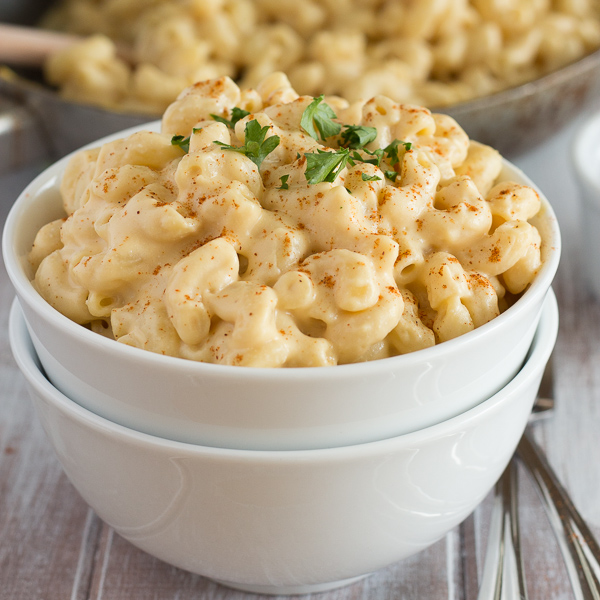
What You Need
3 cups macaroni
½ cup vegan butter
½ cup plain flour
3½ cups boiling water
1½ teaspoons salt
1½ teaspoons garlic powder
Pinch turmeric
2 tablespoons dark soy sauce
¼ cup oil
1 cup nutritional yeast flakes
Paprika
What To Do
Pre-heat the oven to 375 degrees F
Cook macaroni as instructed on the packet, drain and set aside.
Melt the butter, stir in flour and mix over low heat until you have a smooth paste. Mix in garlic powder, turmeric, and soy sauce with the boiling water and gradually add to pan, stirring constantly until you have a smooth liquid. Return to heat and bring to a boil, stirring. Remove from heat and whisk in the oil and yeast flakes.
Place macaroni in ovenproof dish. Stir in most of the sauce. Pour remaining on top and sprinkle with paprika. Cook for 15 minutes.
Serving Cheese As A Dessert
In different traditions, it is customary to serve a cheese course before dessert or after dessert. But sometimes, you can switch out your chocolate cake and cherry pie for a delicious cheese course.
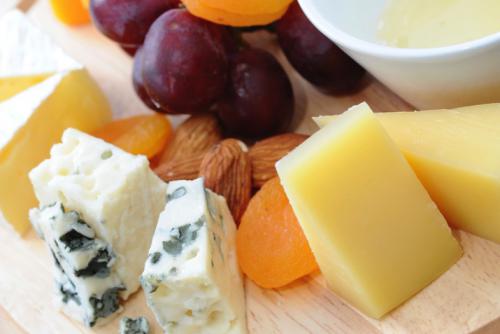
In recent years, it has become popular in some places to serve cheese in place of sugary sweets. As a dessert, cheese is an elegant, healthier option than brownies, cookies or ice-cream sundaes. With its many flavors, textures, and aromas, cheese offers a whole other world of possibilities.
Flavored Cheeses
At specialty cheese shops, like Shisler’s Cheese House, you can find a number of specially flavored cheeses from sweet flavors, fruits, liqueurs, beer cheeses and even chocolate cheeses- perfect for dessert! Shisler’s Cheese House has so many options for a dessert cheese which will have your senses overloading and mouth watering. Our store allows for the cheese to become any course of your meal and can be a perfect fit for dessert. One of our favorites, chocolate cheese can be paired with many foods such as muffins, pancakes, and bread. It is the best of both worlds.
Cheese Plates
If you’re creating your own cheese dessert, cheese plates are a very sophisticated option, especially when entertaining guests. A proper cheese board should have around 3 to 4 cheeses that range in flavor from savory and sweet.
To make the presentation look nice and appealing, arrange fresh fruits between each section of cheese. Pears, apples, figs, berries and grapes are good pairings for most cheeses. Then embellish each plate with a sprinkling of walnuts with a side of honey or pecan sauce.
To complement your offerings, put some dark bread and some delicious dessert wines out with the cheese boards. Dessert cheeses match well with vintage Port, Moscato or Icewines. For more on how to get the perfect cheese board and the best wine pairings, take a look at these articles:
The Perfect Cheese Board
The Best Wine And Cheese Pairings
Serving Port With Cheese
Dessert Cheese Choices
Some cheeses are actually naturally fruity and sweet in flavor which is helpful in making them traditional treats for dessert time. Putting together Dutch Gouda, creamy Havarti or French Brie and adding a few slices of fruit and wine can turn these simple cheeses into delicious, mouthwatering desserts.
For savory cheeses, it can be a little more tricky but they still make alluring dessert choices. Matured Parmesan is nutty and salty and perhaps best served with pears and figs. Or robust Italian Pecorino cut into chunks and served with honey and pears to melt in your mouth. Another option could be pairing strawberries and peaches with some Danish Blue.
If you are looking for a more casual treat, warm some slices of Finnish Juustoleipa (Bread Cheese) in the microwave for 20 seconds and serve it with honey or dip it into your coffee for a nice snack.
Easy Cheese Dessert Ideas
You may not notice it but cheese manages to find its way into many traditional desserts- from cheesecake and pies to tarts and tiramisu. So if you are not ready to fully trade in your favorite sweet treats for a cheese plate, you can enjoy the best of both in one dish.
If you don’t have time to bake, however, cheeses like Ricotta and Mascarpone can be turned into mouth-watering desserts with no fuss. With them being mild and creamy cheeses, they can be easily spread or swirled with sweet complimenting add-ins. Enjoy!
Which Cheese Is Best? Grocery Store, Locally Purchased, Or Purchased Online?
Even though shopping at a grocery store is extremely convenient, who can truly say they enjoy shopping at grocery stores? The one main reason we all shop at them is because they house pretty much everything you need under one roof. Depending on the quality of the grocery store, there are usually 4 counters worth going to- cheese, meat, fish, and cooked meats.
Grocery Store Cheese
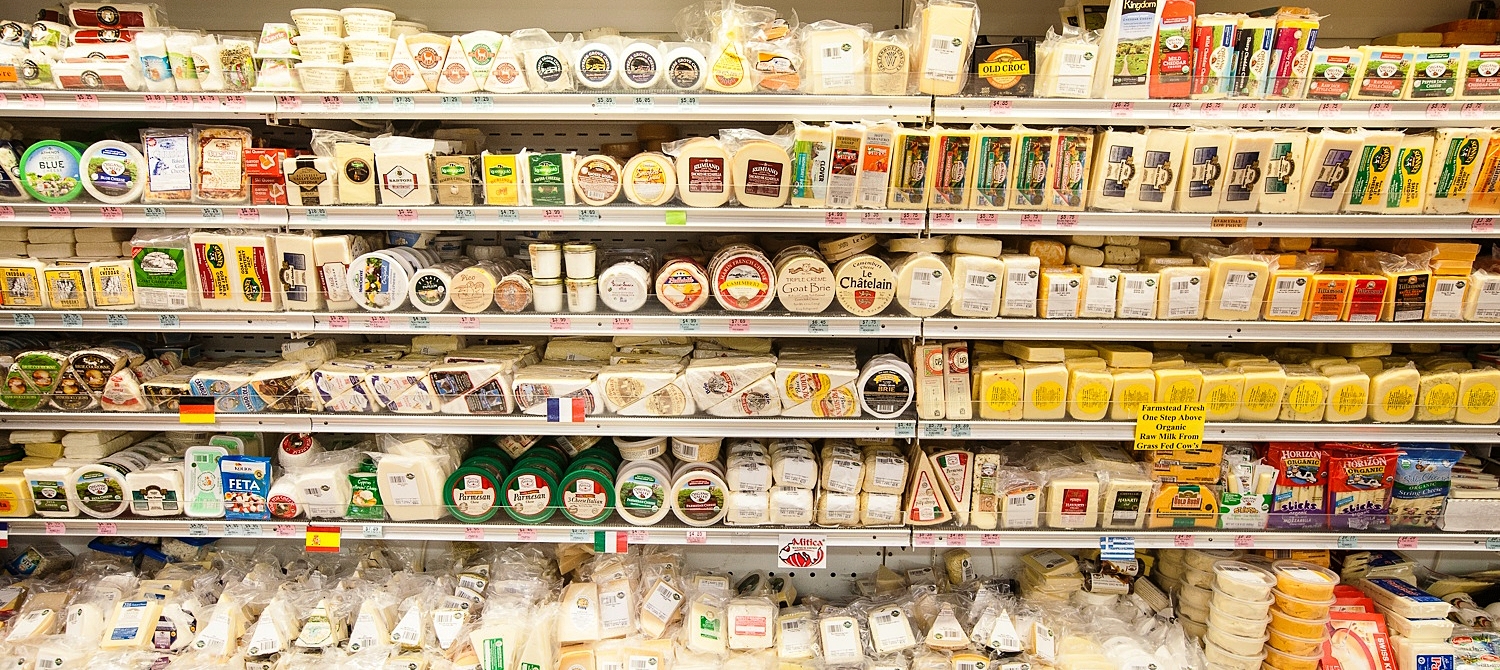
If you are lucky, there may be some cheese which isn’t drowning in vacuum packed, plastic wrap and actually resemble real cheese, not scrunched up chamois leathers that have been left in a water bucket overnight. You may even be able to smell and sample the cheese at the store to make sure you want it!
It all depends on what you expect to pay and what you want from your cheese. Although there are cheap and unpleasant options available, there are some options on the more expensive side that will satisfy your taste buds, you just have to shop around and try to sample some.
It is important to read the labels, it may have a sticker that indicates where it was made, but organic cheeses will have a separate logo to certify that they are organic. Vegetarian and vegan cheeses will also show the correct label. If they do not contain stamps of certification, you cannot trust how the cheese was produced. There will also be information on where the product came from, ingredients used, nutritional information, allergy warnings, use by date and storage instructions all there for our careful consideration.
The choice is entirely down to you when you’re buying cheese off the shelf of a grocery store, but if you are lucky enough to find a knowledgeable cheese counter assistant, don’t be afraid to ask questions.
Locally Purchased Cheese

If you are lucky to have a specialist cheese shop nearby and have never been in, make sure you do and compare the experience and quality with your usual cheese source. Just walking into the store is a whole different experience, it’s as though your senses are reawakened. Farmers markets especially are great places to try before you buy and specialist cheese stores might be willing to let you try the cheese before you buy it. The people who work in these stores are also bursting with the knowledge to help your every cheese need, with a lot more option and variety. They can introduce you to so many cheeses you didn’t even know existed.
If your cheese store is far away, make it an exclusive day out and slow down and enjoy the experience.
Online Cheese Purchasing

Online is a good way of having the best of both worlds. If you have previously visited a cheese store and know exactly what you like, online makes it so you don’t have to go anywhere and you can access the best cheese, no matter what. Shisler’s Cheese House has an online store as well as physical stores to ensure our customers get the best of both worlds. Whether you are looking for a little something for yourself or a gift for a fellow cheese lover, online mail ordered cheese can make the process so much easier and better. With there being thousands of different varieties of cheese, online gives us the chance to access them all, from our very own devices.
Delicious Cheeses of Mexico and The Caribbean
Although the Hispanic cuisine is usually hot and spicy, the cheeses of Mexico and the Caribbean are far from it. The most popular cheeses of the region are the fresh white varieties. They may be quite mild, but they add rich, creamy flavor to the huge number of local recipes available.
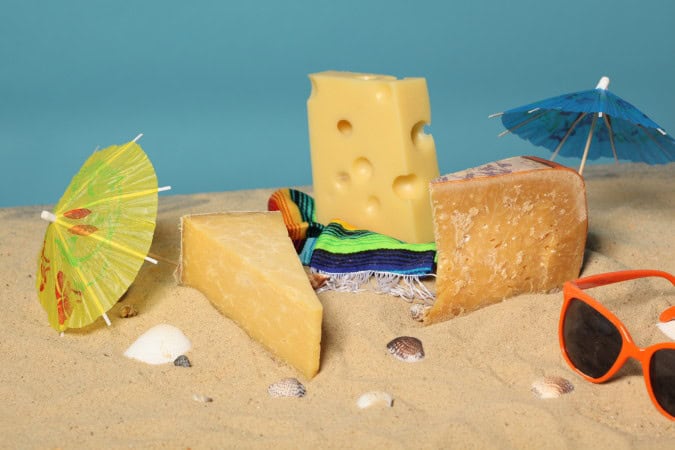
Cheesy Mexican and Caribbean dishes like queso Frito, enchiladas, and chile Rellenos are famous all around the world. It’s almost impossible to imagine that before Spanish colonization, the inhabitants of Mexico lived largely on a diet of fruit and vegetables. The art of cheese making wasn’t even known until the Spaniards brought cows and goats to the area!
Cheese is still being produced in the Mexican state of Chihuahua, from the milk of cattle who originally came from Europe all those years ago. In other famous cheese making areas like Queretaro, Oaxaca, and Chiapas, cheese monger stalls are full with cheeses packed into baskets, wrapped in corn husks or rolled like twine.
The best cheeses from these regions are completely different in every way to Amercian or European cheeses, and they are very worth experiencing:
Chihuahua
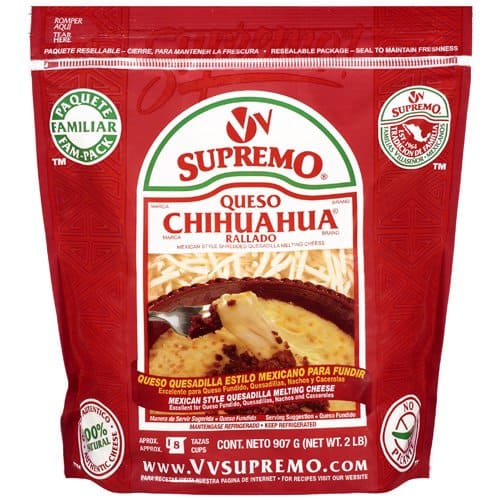
Chihuahua is a pale yellow cow’s milk cheese which can also be named Queso Menonita because of the Mennonite communities of Northern Mexico where it was first produced. The flavor is mild, slightly sour and salty, but actually turns sharp and tangy and very similar to Cheddar, with age. People often use it to make fundido, which is Mexican fondue.
Queso Quesadilla

This smooth, soft cow’s milk cheese has a creamy, milk flavor and a slightly elastic texture. It is a family favorite for snacking on and melting into savory dishes such as quesadillas. A variety of this is called Queso Jalapeno and it has bits of jalapenos mixed into the paste for more spice and zest.
Cotija
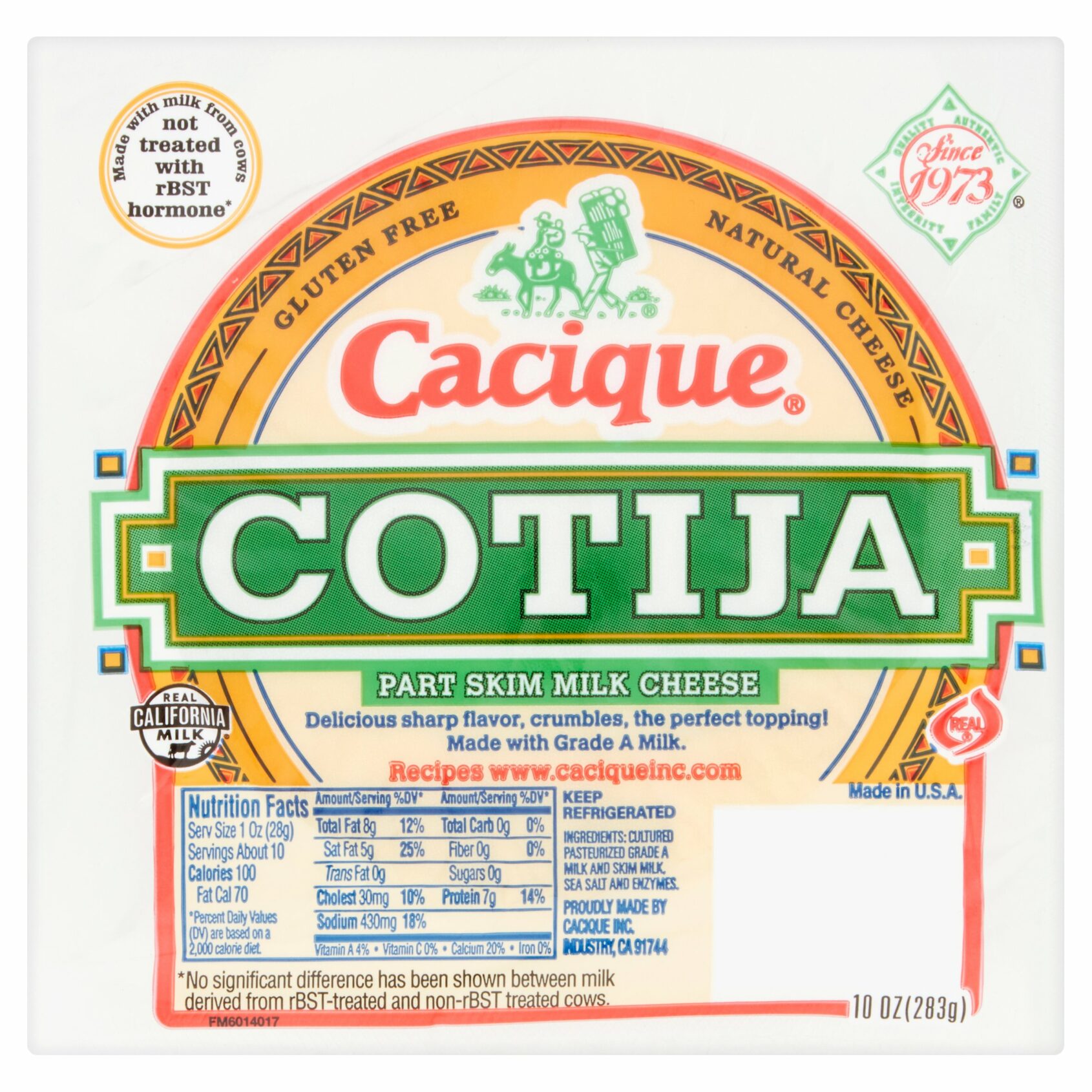
Cotija is sharp, aged cheese that is known as the “Parmesan of Mexico”. It gets its name from the town of Cotija Michoacan where it came from originally. It is made with goat or cow’s milk and has a firm texture and strong flavor with distinctive salty notes. It makes for a good garnish for salads, chili, or pasta.
Queso Media Luna

Also known as Queso De Papa, this Colby-type cheese with its firm, moist texture and orange color has a smooth mild to a tangy flavor. It is a popular cheese in Puerto Rico and is from the Caribbean. Perfect for snacking on or baking with.
Fresh Cheeses

These fresh white cheeses of Mexico and the Caribbean can become warm and soft, without melting when they are heated. They were traditionally crafted by local artisans and delivered to market wrapped in banana leaves.
Queso Oaxaca (Asadero)
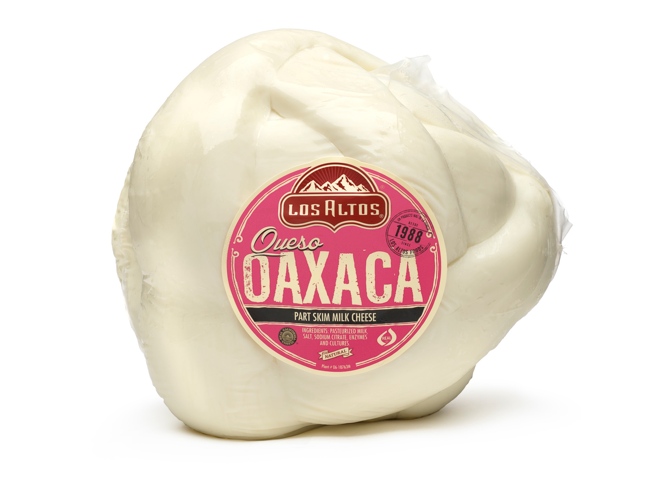
From the Oaxaca region, this famous cow’s milk cheese is a stretched curd variety which is similar in texture to Provolone. It is either white or pale yellow and is kneaded and wound into balls before being plunged into brine for several minutes. This semi-soft cheese has a mild to a buttery and sweet flavor.
Anejo Enchilado

This cheese is firmly pressed and rolled in mild chili powder or paprika to give it a distinctive red coating and slightly piquant flavor. It is made with skimmed cow or goat’s milk, with a hard, dry texture that softens under heat but does not melt. It makes a delicious snack with a tequila or spicy Mexican beer cocktail.
Queso Fresco (Adobera)
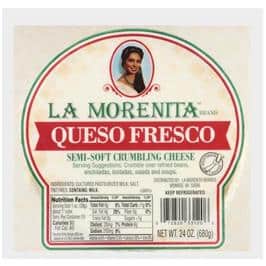
Queso Fresco is the most commonly used Hispanic variety. It is a soft and spongy white cheese which is made from a combination of cow and goat’s milk. The flavor is mild and salty with fresh acidity. Because of its fine-grained texture, the favored use for it is crumbling it over enchiladas and taquitos for added flavor.
Panela (Queso de Canasta)
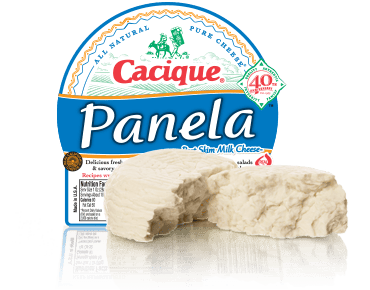
This is the most popular fresh cheese in Mexico. It is white, mild cheese which retains the unique imprint from the basket it is made in. The texture is soft and crumbly, with many different varieties being produced, Panela can be found wrapped in toasted avocado leaves or coated with garlic and chili paste.
Queso Blanco
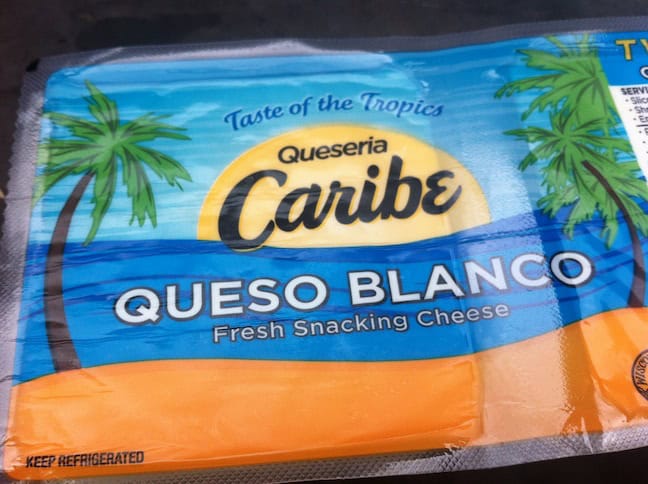
It is traditionally fresh cow’s milk cheese which is flavors cross between Italian Mozzarella and salty cream cheese. The process of creating this cheese is done by Artisans who coagulate the curd with lemon juice, giving it the creamy, but crisp citrus flavor.
Queso Para Freir
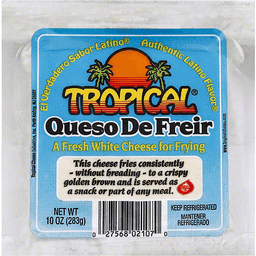
This cheese is popular in the Caribbean and throughout South America. It is a mild, white cheese and a variation of Queso Blanco, but a lot saltier and firmer. Queso Para Freir is great for fried dishes such as the popular Queso Frito because it resists melting.
Common Questions About Cheese
As cheese lovers, it’s easy to know all about the different cheeses available however, there are some simple wonders and questions we are left with regarding things like presentation and storage so here are some quick answers to help all your cheese queries.
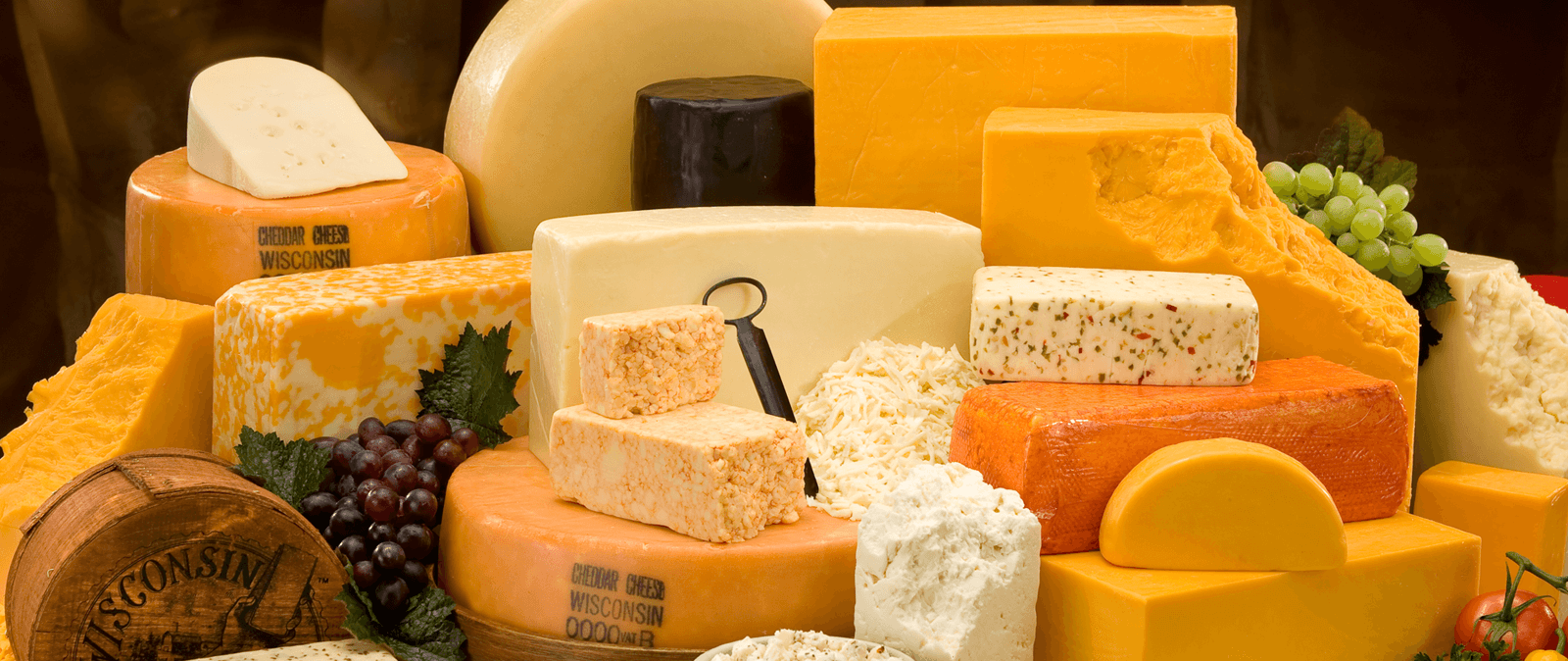
Can You Eat Cheese When You’re On A Diet?
If you enjoy cheese in moderation, it can easily fit into a healthy diet. In fact, cheese is a good source of essential nutrients such as calcium, protein and Vitamin A. These nutrients are important for keeping your skin and eyes healthy, your bones and teeth strong, and your muscles growing. Studies have shown that if you eat a piece of cheese after eating a meal or a sugary snack, it can restore minerals of tooth enamel and protect your teeth against cavities.
Which Cheeses Have The Lowest And Highest Levels of Fat?
Every cheese will come with its own nutritional profile which will be displayed on the label. Labels make it easier for if you are watching your fat intake as you can refer to it for the cheese’s fat facts. However, here are some general guidelines for if you find yourself at a cheese dinner party where there are no labels:
Low-Fat Cheeses: Cheeses like cottage cheese, Quark, Ricotta, and Edam. Also, any cheeses which are labeled with low-fat, reduced-fat, and even fat-free versions of your favorite cheeses are readily available.
Medium Fat Cheeses: These cheeses include Camembert, Brie, Emmental, Edam, Feta, and Mozzarella, as well as a lot of process cheeses and soft goat’s milk cheeses.
High Fat Cheeses: Cheeses such as Cheddar, Cheshire, Caerphilly, Gouda, Gruyere, Parmesan, and Stilton are all high in fat but deliciously addictive!
Why Doesn’t Reduced-Fat Cheese Melt Well?
A lot of reduced-fat cheeses are made with added gums and stabilizers to help stimulate the flavor and texture to make them similar to the full-fat varieties. While these cheeses are great for shredding into salads, snacking on, or topping sandwiches, they do not perform well when heated. The reason for this is because of the lower amount of fat in the cheese. Without a decent amount of fat, the heated cheese won’t melt into a creamy texture, it will instead be turned into a hardened, clumpy, stringy mess. The best way to avoid that is to just use a full-fat variety for melting, because a little does go a long way, so it shouldn’t be too bad for you.
How Long Should You Keep Cheese?
No matter how well you store your cheese, it will still continue to ripen in your refrigerator. This is why it is especially important to consume soft cheeses soon after you have purchased them. Once you open soft cheeses, they will only keep for around one to two weeks.
On the other hand, harder cheeses tend to remain fresher for longer. Blue cheeses will keep for one to four weeks, cheddars and swiss cheeses will keep for several weeks, and hard cheeses are usually good to eat for several months.
Also, large pieces of cheese keep a lot longer than shredded cheese, which is why labels usually state to consume shortly after opening the packet.
What Is Processed Cheese?
It was first invented in 1911 by Switzerland’s Walter Gerber. Then, in 1916, James L. Kraft applied for his method for his processed cheese to be patented. A lot of processed cheeses today are sold in individually wrapped sandwich slices, which are great for melting into burgers, but definitely not for serving with fine wine!
Processed cheeses usually consist of a blend of fresh and aged cheeses combined with some preservatives, coloring, and emulsifiers to make them smooth and ease melting. They are then pasteurized to stop the ripening process which ultimately gives the cheese a longer shelf life. This does come at some sacrifice though because processed cheese definitely lacks the distinctive flavor and texture that natural cheese has.
Is It Best To Serve Cheese Chilled Or At Room Temperature?
It is usual that you will serve cream cheeses like Ricotta, Boursin and Quark chilled, however all the other variety of cheese are best enjoyed at room temperature. Room temperature is when cheese is at its best level of flavor, texture, and aroma. If you eat cheese too cold, you are basically missing out, so just remove cheese from the refrigerator 30 minutes before serving and enjoy!
Can You Freeze Cheese?
It is fine to freeze cheese, it can be frozen to make it last a lot longer. You do however have to understand that cheese which is frozen will go through some textural changes. Softer cheeses may separate, and harder cheeses may become crumbly. However, if you are going to use the frozen cheese in cooked dishes, you probably won’t notice any difference.
A quick tip to freezing cheese is to double wrap it and only keep it in the freezer for up to six months. When you are ready to take it out the freezer, thaw it in the refrigerator and use the cheese within a few days.
All About Chardonnay!
If you’re a lover of wine, you’ve most likely had a glass of Chardonnay at some point in your life. However, the Chardonnay you most recently tried is probably a lot different to the one your friend drinks after work. This is because Chardonnay can vary so much as it is the most versatile varieties in the entire world. It has a rich history and flavor profile which ranges at every point of the spectrum. Even though it is one of the most popular varieties in the world, it can be one of the hardest to understand and wrap your mind around.
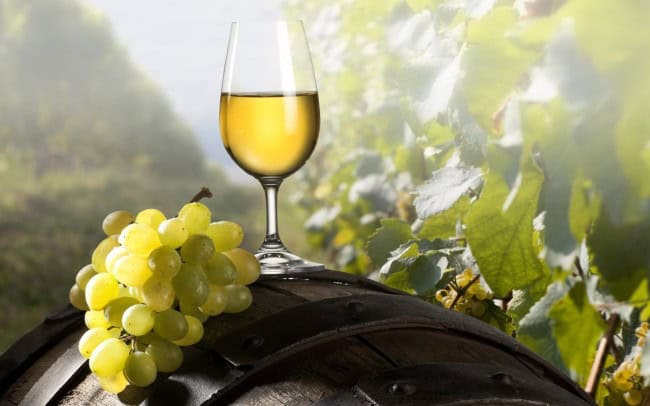
Here is everything you have ever wondered about Chardonnay:
Where does Chardonnay come from?
Chardonnay’s origin is in the eastern part of France- Burgundy. It is known as the best region for growing the variety, in the world.
Is Chardonnay a grape or a region?
It is a green-skinned grape variety that is used to create white wines in regions all around the world.
Where is Chardonnay grown?
Every wine-producing region of the world grows Chardonnay currently. A lot of the popular regions are Burgundy, California, Austrailia and Washington, even though the grape is also grown in many other regions.
Where are the most renowned regions for Chardonnay?
The most renowned region is believed to be its birthplace-Burgundy. It produces the best Chardonnay in the world, notably within the Chablis and Côte de Beaune areas. In Côte de Beaune, many Grands Crus, such as Montrachet, Corton, and Charlemagne, are some of the most highly regarded Chardonnay.
What is the difference between Burgundy and Chablis?
Chablis is a wine district situated within the Burgundy region. It is the northernmost zone in Burgundy and Chardonnay produced in Chablis has much more acidity, wet rock notes, and less fruity flavors than Chardonnay grown in warmer areas like Côte de Beaune.
What kind of wine does Chardonnay make?
Chardonnay is commonly known for its dry white wines that again, are all over the spectrum in flavor. It can range from super high-acid to rich, full-bodied wines, that’s what makes Chardonnay so diverse and unique.
What is Oak Chardonnay?
During the end of the 20h century, “butter bomb” Chardonnay became increasingly popular, which meant taking the juice and aging it in new oak to impart creamy, “buttery” flavors. However, in today’s society, the love for Oak Chardonnay is declining, with people gravitating more towards balanced bottles.
How much does Chardonnay cost?
The cost can range all over the spectrum, with the cheapest bottles being as little as $5 and bottles like Grands Crus going for hundreds, if not thousands of dollars.
Serving Port With Cheese
Cheese is the perfect course of a special meal and a delicious snack at any other time. It can be paired with so much different, complimenting food and drinks, what made port a good cheese pairing?

Facts About Port
The name “Port” comes from its place of origin, Oporto, in Portugal. The Methuen Treaties of 1703 made it so Portugal was in the Grand Alliance in the war of the Spanish Succession. In return for allowing English cloth free access to the Portuguese markets, Portuguese wines had to be cheaper than French wines to make sure the constant supply of wine was quality wine.
No other country are allowed to call their fortified wines port because the vineyards in Douro Valley are the only place where the grapes for port are grown.
The best temperature to serve port is 55-65F, although, white port is usually served chills and tawny port can be served at cooler temperatures as well.
There are many different kinds of port, around 9 styles, so, which port is best to serve with our favorite cheese?
Port
The finest ports are vintage. The first vintage ports were declared in 1734 and it is still an ongoing term used on the port which is produced in years when grape production is described as ‘exceptional’. LBV is an abbreviation of Late Bottled Vintage and is filtered and bottled vintage port.
Unfiltered ports are called ‘crusted’, they need careful decanting to get rid of any sediment before they are served.
White port is a lot newer than other styles of ports, first produced in 1934 and the dry type is popular as an aperitif.
The Traditions of Serving Port
The British Naval tradition of serving port was that it should literally be served from ‘port to port’ at the end of dinner. Another well known port-passing ceremony is within the armed force and went as follows:
-The port is placed in front of the host.
– The host serves guests to the right.
– The host then passes port to guest on the left.
– The remaining guests then pour their own port and pass it to their left until it is returned to the host.
This is the accepted way to serve port during formal dinners and it is thought that if you were to ask for the port to be passed to you, you’re considered to show a lack of social standing.
Which Cheese Is Best To Serve With Port?
The cheese which is most popular with port is commonly Stilton.
Stilton is salty, creamy and acidic whereas Port is a heavy, sweet fortified wine. This makes for a good pairing because the flavors and textures compliment each other greatly and both have been available for hundreds of years.
A lot of good blue cheeses also have the strength to challenge the dominant flavors of port so that neither of them overpowers one another. So if you are not a fan of Stilton, most blue cheeses are a good option, the best thing to do is visit your local cheese store such as Shisler’s Cheese House and ask for recommendations.
An even more bizarre thing to do with port and cheese is serving white port with cream cheese! You wouldn’t think of that, would you? The best thing to do is explore with flavors because that is where it ultimately all begins and is how experts are still creating new cheeses to this day!
Exploring Asian Cheeses
It is commonly assumed that cheese is popular all over the world, but that is not the case. It may be hard to imagine the world without cheese, but in many Asian countries, cheese is not a food with much cultural or culinary significance.

For example, in China, milk, and dairy products have been historically rare. The biggest reason behind this is the high rate of lactose intolerance, along with other reasons such as poor climate, and storage and transportation issues.
In this modern day, however, the technological advancements are changing times in Asia, enabling the cheese market to grow. One day, there might be a whole range of delicious cheeses available throughout Asia, but for now, let’s explore some varieties from current and notable Asian cheese-producing countries. These countries include the Philippines and India, and whether it is made from yak’s milk, blended with confections or enjoyed fresh, the cheese in Asia may be little, but they are unique nonetheless.
Philippines
Kesong Puti:

This cheese is also known as Filipino cottage cheese. It is a fresh cheese which is made from rennet, salt and unskimmed milk of carabao, which is a species of Southeast Asian water buffalo. Kesong Puti is a soft cheese which is white colored with salty, but sometimes sour flavors. Its origin is in the provinces of Laguna, Samar, Bulacan, Cebu and it remains fairly popular in those areas as a breakfast food. Common pairings with this cheese are a freshly baked piece of local bread called “pan de sal”.
India
Bandel (Bandal):
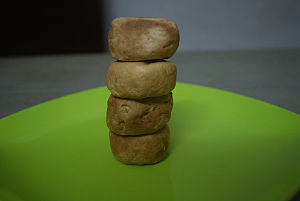
Bandel is a soft, unripened salted cheese which gets its name from the place it originates- Bandel. This cheese is made out of cow’s milk, and they use lemon juice to separate the curds from the whey. It is then shaped and drained into baskets and smoked. Bandel is sold in circular flats immediately after production and is fresh and aromatic because of that.
Paneer (Panir):
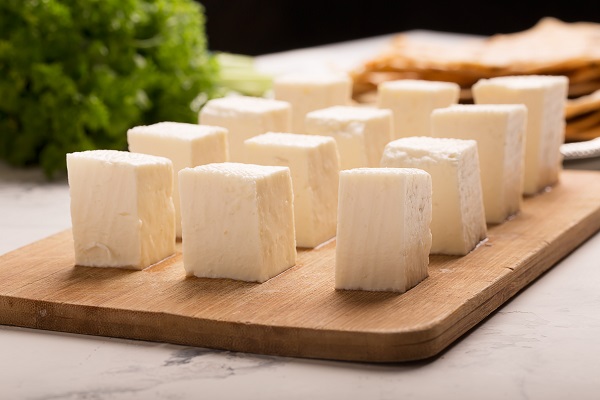
Perhaps the most well known of all the Asian cheese, this traditional cheese is semi-soft and made from cow’s milk. Traditionally used in Indian cuisine, the process of making Paneer does not involve rennet because cows are sacred to Hindus. It is also unaged, acid-set and is completely vegetarian. A lot of curry dishes include Paneer or it is wrapped in dough and fried for snacks because it is high in protein. The cheese is similar in texture to ricotta or tofu and acts as a perfect meat substitute for vegetarians.
Nepal and Tibet
Chhena (Chhana):

Commonly found in Nepal, Bangladesh, Chhena is a unripened, fresh curd cheese made from either water buffalo milk or cows milk. The process of crafting Chhena is similar to that of Italian ricotta, where the cheese is acid-coagulated. It is often used as a dessert cheese because it is very soft and smooth. Sweet desserts such as resgulla and semolina commonly include Chhena as an ingredient.
Tibet:

Tibet is crafted from yak’s milk. It is semi-hard and gets its name from the plateau region of Central Asia where it is made. The cheese is molded, pressed and dried in natural sun and wind. The taste is extremely strong.
Ragya Yak:

This unique cheese is crafted in Nepal by Tibetan nomads. It is an aged dri’s milk (female yak) cheese which is firm and slightly granular. The color is greenish-yellow and can be mild to medium in strength with flavors similar to goat’s milk Ibores cheese from Spain. There is only one time period of the year this cheese is made- from the end of June to early September. The aroma is mild and nutty with the rind offering just a hint of spice.
Japan
Sakura:
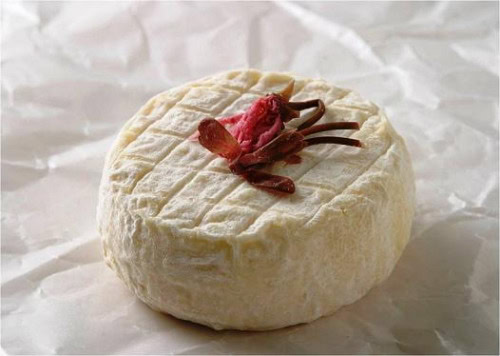
This soft cheese is produced on the island of Hokkaido and is the first widely acclaimed variety from the Asian country of Japan. It is so popular that it even won a gold medal at the Mountain Cheese Olympics in Switzerland. Sakura is creamy white with flavors of mountain cherry leaves, which is also where it gets its name from because Sakura translates from “cherry blossom” in Japenese.
10 Of The Best Mother’s Day Wines
Mother’s Day is fast approaching and it is the one day of the year which is dedicated to pampering moms everywhere… Also, a great excuse to drink lots of wine!
Choosing a bottle of wine doesn’t always mean picking the most expensive bottle. If you’re picking some wine for your mom, the best thing to do is find out what she loves best. It can range from aromatic white and crisp sparkling wines to refreshing rosés and silky reds. Either way, this list is sure to please any mom who deserves the best:
Sparkling Wines:

Berlucchi Franciacorta ’61 Rosé
This wine is a signature sparkling wine of Italy’s Lombardy region, Franciacorta is made in the same way that champagne is. The reason it has ’61 in the name is because Guido Berlucchi began producing the style in 1961, and has remained the leader of the region ever since. It is a beautiful salmon pink wine with flavors or lemon, strawberry, and berry. It is a refined, medium-bodied sparkling wine and pairs very well with shellfish and aged cheeses.
Rack & Riddle North Coast Blanc de Blancs
Rack & Riddle is a special wine as it is part of the handful of wineries in California that still use the méthode champenoise, which is a traditional French process which is used to produce sparkling wine. The attention to detail that this winery employs is definitely noticeable within the taste of North Coast Blanc de Blancs. This sparkling wine is full of bright and fruity aromas of melon and green apple, along with strong complimenting flavors of lemon curd and lime to reserve a smooth and crisp finish.
White Wines:

Smith-Madrone 2013 Riesling
Smith-Madrone 2013 Riesling originates from terroir in which the winemaker Stuart Smith purchased back in 1971. The Smith-Madrone vineyards have been producing grapes perfect for crafting German and French style wines. This particular wine has intense aromas of stone fruit, honeysuckle, and white flower. It also has notes of citrus and stone fruit in its flavor which is rounded out by a creamy finish.
Cherry Tart 2013 Chardonnay
This delicious type of Chardonnay is a blend of grapes from the Cherry Pie winery. The winery has three vineyards in Napa, Sonoma and Monterey counties. It is 100 percent Chardonnay which has a strong aroma of white fruit and flower. The taste is rich with notes of marzipan, pineapple, and caramelized pear, there is also a hint of oak throughout.
Whitehaven 2014 Marlborough Sauvignon Blanc
This white wine is quintessentially Marlborough in its aromas and flavors. It is a medium-bodied wine with notes of gooseberry, peach, and herbs in its aroma and intense tropical fruit and citrus flavors on the palate. Because of its hand-harvested grapes which are grown in the warm New Zealand Climate, it is vibrant, acidic and crisp.
Red Wines:

Columbia Winery 2013 Columbia Valley Merlot
This wine is deep red colored and produced from volcanic soil of central Washington. It boasts fragrant aromas of spice and plum along with dark berry and vanilla. A great pairing with wine would be poultry because of its vivid acidity.
Regusci Winery 2012 Matrona Red Wine
It takes its name from the Italian word for “matriarch” and is crafted in honor of Livia Regusci who was the founding mother of the historic family ranch. This red is more of a vintage blend of Cabernet Sauvignon and Merlot in which it offers rich fragrances of cherry and berries. The berry flavors are also a big part of the taste, along with delicious notes of dark chocolate and coffee beans.
Elizabeth Chambers Cellar 2013 Winemaker’s Cuvée Pinot Noir
Elizabeth Chambers Cellar 2013 Winemaker’s Cuvée Pinot Noir is a delicious blend of grapes from Falcon Glen, Lazy River, and Russell Grooters vineyards. Not only that, but this Pinot Noir is aged for 15 months in French Oak barrels and is most desirable after being in the bottle for more than 2 years. Its notes of cherry aroma and flavors of strawberry and rhubarb are pleasure in a glass.
Rosé Wine:

Solace 2014 Rosé
This is another wine in which is produced using the French méthode provençale, which the process entails red grapes being grown and harvested solely for the production of the rosé. On the nose, the aromas are strong with notes of white flower and some peach. With juicy flavors of raspberry, strawberry ad melon, this wine is a delicious refresher.
Dessert Wine:





